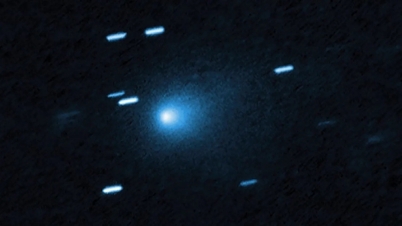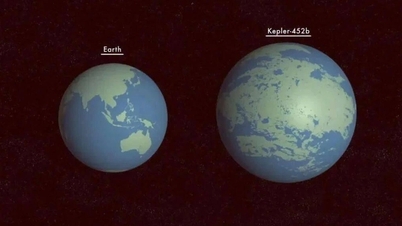Measuring the speed at which the Solar System is moving may sound simple, but it is actually one of the great challenges to our understanding of the universe. As the Solar System speeds along, it creates a slight deflection – a “headwind” – that causes distant galaxies to appear more in the direction of the movement than behind. This effect is so small that it requires extremely delicate measurements to detect.

Astronomers have looked at how fast the Solar System is moving through space. (Source: CactiStaccicingCrane)
Scientist Lukas Böhme (University of Bielefeld, Germany) and his research team analyzed galaxies that emit strong radio waves. Unlike optical telescopes that are easily obscured by dust and gas, radio telescopes can receive signals from a distance regardless of obstacles, helping to observe galaxies that are invisible to the naked eye.
They combined data from three radio telescopes, including LOFAR, a network spread across Europe. This data set allowed them to count galaxies with high precision. The team also developed a new method to handle the complex structures of many galaxies, giving them more realistic results.

LOFAR 'superterp' – the centerpiece of a European-wide radio telescope network, located in Exloo, the Netherlands, which collects signals from the distant universe. (Source: LOFAR)
The results show that the distribution of galaxies is 3.7 times more uneven than predicted by the standard cosmological model. This leads to two possibilities: either the Solar System is actually moving much faster than previously calculated, or the galaxies in the universe are not as evenly distributed as we once thought.
“If the Solar System is really moving that fast, we need to reconsider our basic assumptions about the large-scale structure of the universe,” said study co-author Professor Dominik Schwarz.
The finding also fits with previous studies of quasars – the bright cores of distant galaxies – which have shown a similar effect in infrared data, suggesting the phenomenon is not a measurement error, but a real feature of the universe.
The research shows that new observing techniques could change the way we understand the universe, while also reminding us that there is still much we don't know about the Solar System's place in space.
Source: https://vtcnews.vn/he-mat-troi-dang-lao-qua-vu-tru-nhanh-bat-ngo-ar987482.html


![[Photo] General Secretary To Lam receives Vice President of Luxshare-ICT Group (China)](https://vphoto.vietnam.vn/thumb/1200x675/vietnam/resource/IMAGE/2025/11/15/1763211137119_a1-bnd-7809-8939-jpg.webp)



![[Photo] Prime Minister Pham Minh Chinh meets with representatives of outstanding teachers](https://vphoto.vietnam.vn/thumb/1200x675/vietnam/resource/IMAGE/2025/11/15/1763215934276_dsc-0578-jpg.webp)





































































































Comment (0)